
Incredible fire danger ratings from the EFFIS for today in some places in Poland: at the level (FWI ~55) of an extreme summer day in the Mediterranean and a 16x anomaly. pic.twitter.com/wYec3qj2HS
— Paulo Fernandes (@FireLab_UTAD) April 24, 2019
News and opinion about wildland fire

Incredible fire danger ratings from the EFFIS for today in some places in Poland: at the level (FWI ~55) of an extreme summer day in the Mediterranean and a 16x anomaly. pic.twitter.com/wYec3qj2HS
— Paulo Fernandes (@FireLab_UTAD) April 24, 2019
We have to learn to live with fire
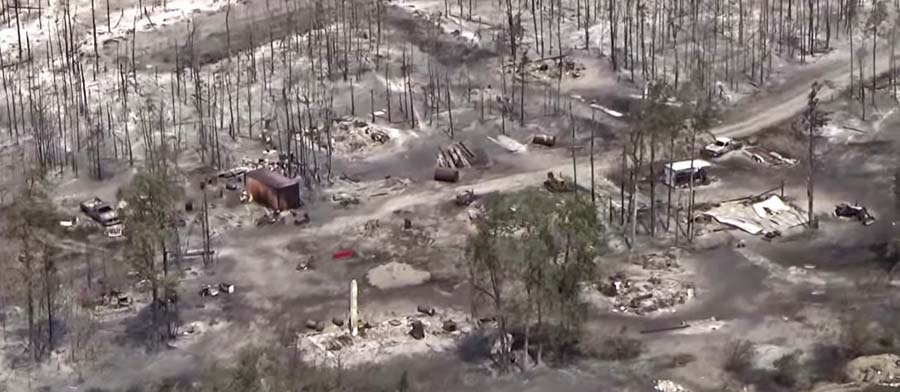
A reporter asked me what needs to be done to keep from repeating disasters like we have seen recently in California at Paradise, Redding, and the Napa Valley. I told him that there is no one thing that needs to be done, such as raking or “forest management”, it requires a comprehensive holistic approach.
The principle of the weakest link in the chain applies here. If one of the categories of improvements to protect a development is sub-par, the individual structures and the entire community in a fire-prone environment is at risk. And if a homeowner does not do their part, it can endanger their neighbors.
Reducing the chances that a fire in a populated area will turn into a disaster that burns thousands of homes involves at least six categories of factors: home spacing, envelope of the structure itself, home ignition zone, community infrastructure, wildland urban interface, and fire codes.
Cities, counties, and planning boards are often under pressure to approve new housing developments. They want to expand their tax base. Developers try to fit as many homes into a new subdivision as possible to maximize their investment. This too often results in homes that are 20-feet apart. If one is ignited by a burning ember that may have traveled a quarter of a mile from a fire (or a burning home) the radiant heat alone can ignite the homes on both sides. Then you can have a self-powered conflagration spreading house to house through a city. When the structures are that close together, the homeowners have not reduced the fuel in the Home Ignition Zone, and the home itself is not built to FireWise standards, a massive disaster can be the result.
If a homeowner wants, or is required, to reduce the flammable material within 100 feet of their residence, what are they expected to do if there is another home 20 feet away that is really a large assembly of flammable material?
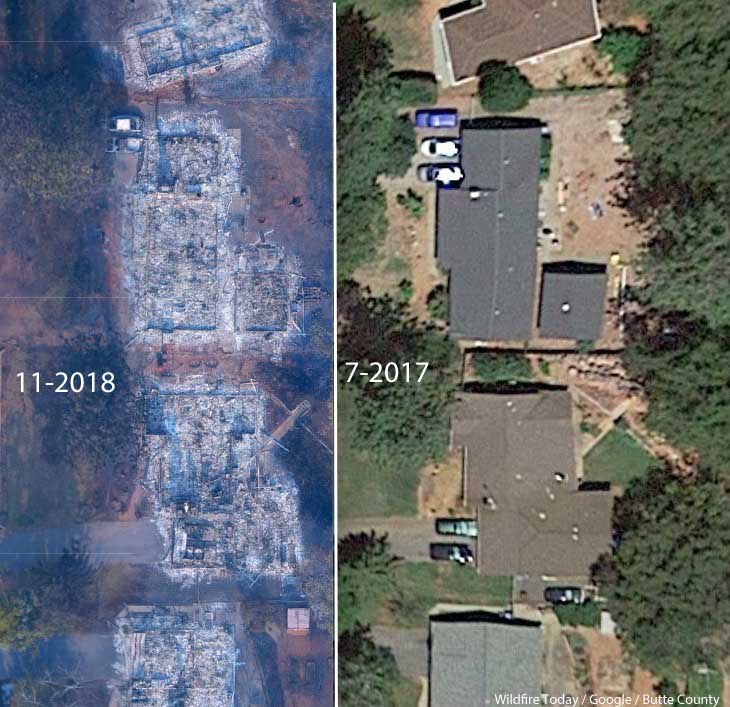
Some of the homes in Paradise, California that burned were less than 20 feet apart. According to measurements using Google Earth, we determined that the structures in the photo above were 14 to 18 feet from each other.
The National Institute of Standards and Technology released a report on the 2012 Waldo Canyon Fire that burned 344 homes and killed two people in Colorado Springs, Colorado. They concluded that current concepts of defensible space did not account for hazards of burning primary structures, hazards presented by embers, and the hazards outside of the home ignition zone. In addition, NIST recommended:
High-density structure-to-structure spacing in a community should be identified and considered in [Wildland Urban Interface] fire response plans. In the Waldo Canyon fire, the majority of homes destroyed were ignited by fire and embers coming from other nearby residences already on fire. Based on this observation, the researchers concluded that structure spatial arrangements in a community must be a major consideration when planning for WUI fires.
After studying the Carr Fire that destroyed 1,079 residences at Redding, California earlier this year, retired CAL FIRE Battalion Chief Royal Burnett reached similar conclusions.
It was easy to figure out why the houses on the rim burned — they were looking right down the barrel of a blowtorch. Even though they had fire resistant construction, many had loaded their patios with flammable lawn furniture, tiki bars and flammable ornamental plants. Palm trees became flaming pillars, shredded bark became the fuse, junipers became napalm bombs. Under current standards houses are build 6 to an acre; 10 feet to the property line and only 20 feet between houses. Once one house ignited, radiant heat could easily torch the next one.
2. Envelope of the structure itself
Included in this category are characteristics of the roof, vents, siding, doors, windows, foundation, fences, eaves, and decks. A FEMA publication (13 MB) has excellent detailed recommendations. Headwaters Economics found that the cost of building a fire-resistant home is about the same as a standard home. When implemented, Chapter 7A of the California Building Code, regulates these features.
3. Home Ignition Zone
The NFPA and FireWise programs recommend reducing flammable material within 100 feet of structures and spacing the crowns of trees at least 18 feet apart that are within 30 feet of the home, 12 feet apart at 30 to 60 feet, and 6 feet apart at 60 to 100 feet. Another house that is 15 to 50 feet away is also fuel, and if it ignites will be a serious threat.
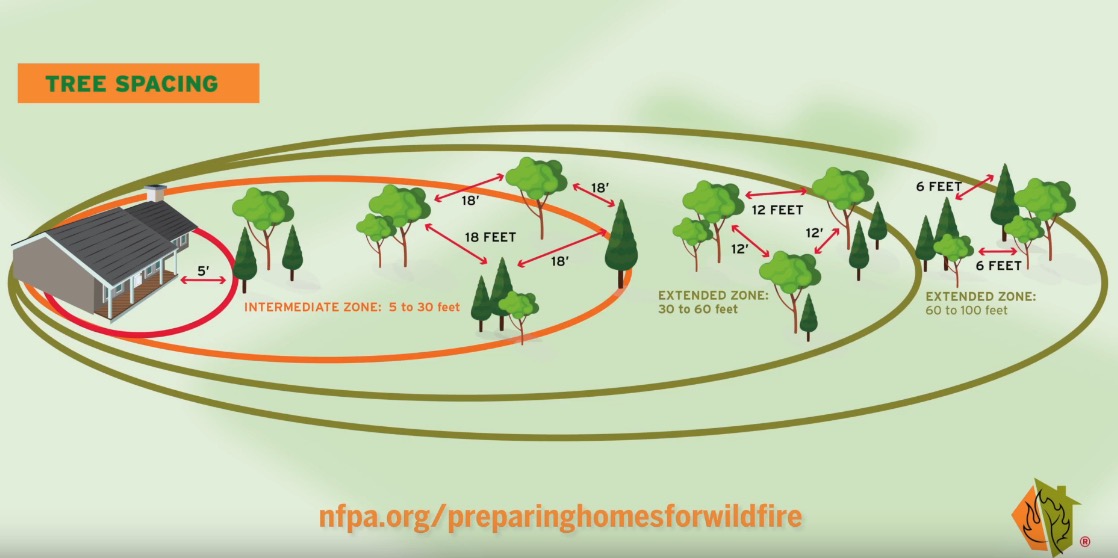
4. Community infrastructure and planning
Again, the FEMA document has great recommendations.
5. Wildland-Urban Interface
There is of course much that can be done surrounding the places where people live that would reduce the vegetation or fuel and decrease the intensity and ember generation potential of a fire as it approaches an urban area. Large scale fuel management projects including fuel breaks and prescribed fire programs are usually conducted by state and federal agencies.
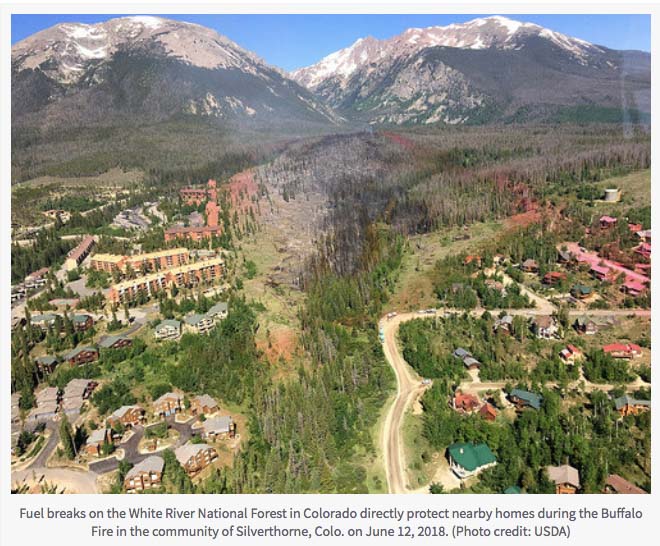
A fuel break does not have to be devoid of vegetation, but it should have minimal tons per acre that would therefore burn with less intensity and with fewer fire brands being lofted downwind. This could enable firefighters to make a stand and create a place from which to ignite a backfire, perhaps aided by aircraft dropping water or retardant.
6. Fire codes are essential
The only effective way to ensure that residents understand and implement these five tasks is to make them mandatory by establishing Fire Codes at the local and state levels.
Analysts studying the aftermath of the Camp Fire which destroyed much of Paradise, California found that homes built to fire-safe standards had a much higher survival rate than those that were not. Beginning in 2008 new construction in the city was required to follow a standard, Chapter 7A of the California Building Code, designed for the state’s areas at high risk from wildfire. Fifty-one percent of the homes built under the 7A code survived, while only eighteen percent built before 2008 did.
Chapter 7A lays out standards for roofs, exterior walls, vents in exterior walls and attics, windows, exterior doors, decking, and outbuildings. Remember, the cost of building a fire-resistant home is about the same as a standard home.
The warming climate is demonstrating that wildfires are becoming increasingly perilous. It is the responsibility of state and local governments protect their citizens by enacting sensible standards.
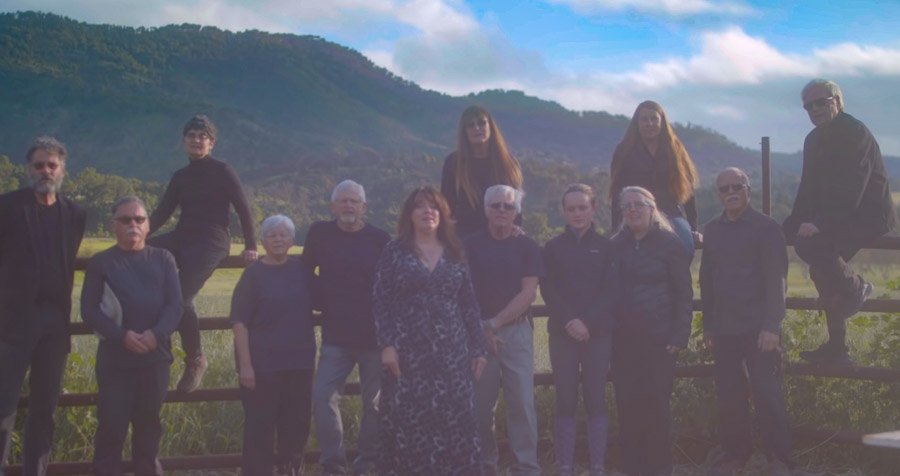
The Thomas Fire in December, 2017 burned 281,893 acres near Santa Barbara and Ojai, destroyed 1,063 structures, and caused the death of one civilian and one firefighter.
One of those structures was the music studio of singer-songwriter Rain Perry. Many of her neighbors lost their homes.
Yesterday marked the premiere of a music video by Ms. Perry for her song “Vapor,” from her new album Let’s Be Brave, filmed at the burned ruins of the Ojai, CA landmark Amestoy House. The video features a dozen neighbors who lost homes and studios in the Thomas Fire.
“Vapor” is a song about survival and hope:
“What lasts is metal, glass and clay
The rest becomes vapor and burns away
We’re here for a minute, so what will it be?
I’ll matter to you – you matter to me”
Directed by Micah Van Hove (Shadow of a Gun, Menthol), the video captures the resilience of everyday folks, who each brought to the shoot an object from their home that survived the fire: from a ceramic angel to a wrench to a bicycle.
Ms. Perry’s home, thankfully, survived, but she lost all her instruments, career memorabilia and older recordings that had not been digitized.
Like the burned chaparral around her home, though, Rain’s artistic drive resprouted with a passion, and she wrote and recorded Let’s Be Brave, her fourth album with multi-instrumentalist and Grammy-nominated producer Mark Hallman at the Congress House in Austin, Texas.
With a cover photo by Patricia Houghton Clarke of Rain lying on the burned foundation of her studio, and featuring cameos by Chuck Prophet (“St. Julie of Iowa”) and Jon Dee Graham (Bruce Springsteen’s “Rocky Ground”), with a kickass backup choir by Noelle Hampton, Jaimee Harris, Daisy O’Connor, Shawnee Kilgore and Emily Shirley, “Let’s Be Brave” is a celebration of bravery of all kinds.
A CD Release Celebration is scheduled for April 27th in Ojai– a benefit for the California Community Foundation Wildfire Relief Fund.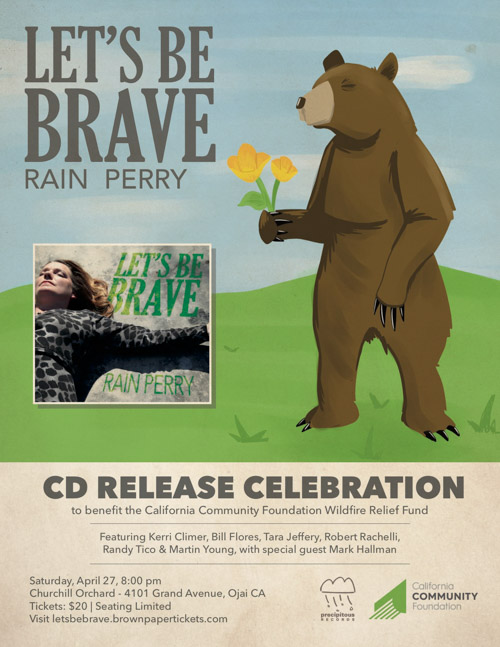
For more information, visit http://rainperry.com.
Homes in Paradise, California built to fire-safe codes had a much higher survival rate in the Camp Fire
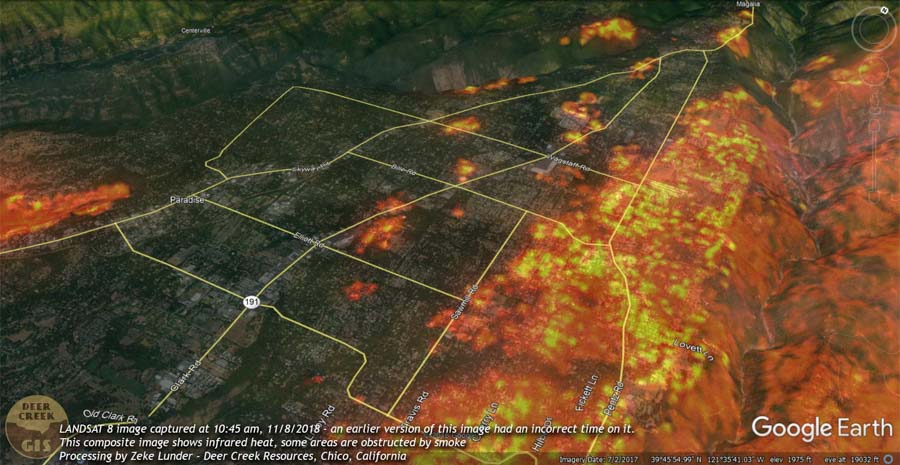
Analysts studying the aftermath of the Camp Fire which destroyed much of Paradise, California found that homes built to fire-safe standards had a much higher survival rate than those that were not.
Beginning in 2008 new construction in the city was required to follow a standard, known as the 7A Code, designed for the state’s areas at high risk from wildfire, requiring fire-resistant roofs, siding and other safeguards. Fifty-one percent of the homes built under the 7A code survived, while only eighteen percent of those built before 2008 did.
While this would seem like an easy lesson to learn, some areas in the state are reluctant to apply the fire-safe standard.
Below is an excerpt from an editorial at the Sacramento Bee:
“…As many as 3 million homes stand in what the state calls “very high fire hazard severity zones,” according to Cal Fire. These areas, where the climate and the presence of combustible foliage can lead to tinderbox conditions, are destined to burn. The data on which homes survived the Camp Fire should be a call to action for every city in the danger zones.
“Unfortunately, short-term thinking can triumph over common sense. Cities facing severe fire risks can avoid compliance with the fire-resistant building codes, or choose to avoid their obvious advantages, despite the fact that “a new home built to wildfire-resistant codes can be constructed for roughly the same cost as a typical home,” according to a report by Headwaters Economics.
“Take Santa Rosa’s Coffey Park neighborhood, where the Tubbs Fire killed five people and destroyed 1,321 homes in 2017. The neighborhood wasn’t considered a fire hazard zone, unlike some other areas of Santa Rosa. The Tubbs Fire proved otherwise, but Coffey Park still isn’t designated as a “very high fire hazard zone” by Cal Fire.
“ ‘City officials are OK with that,” according to The Bee. “Although developers rebuilding Coffey Park are being urged to consider fire-resistant materials, city spokeswoman Adriane Mertens said the city doesn’t see any reason to impose the 7A code in the neighborhood.’ “
From KTLA:
A suspected arsonist accused of setting a series of fires in the Sepulveda Pass near the Getty Center [in Los Angeles] was taken into custody on Monday after a Good Samaritan said he saw the man lighting the fires and stepped in.
That Good Samaritan sprang into action and tackled the man.
 The suspect was arrested after Richard Lazenby took him down to the ground and held him there until officers arrived. Part of that confrontation was caught on camera.
The suspect was arrested after Richard Lazenby took him down to the ground and held him there until officers arrived. Part of that confrontation was caught on camera.
“I yell at him, like, ‘what are you doing?” Lazenby said. “And he says, ‘I’m destroying everything.'”
Lazenby was driving home from Easter Sunday church service with his family when he saw brush fires burning along Sepulveda Boulevard. He then saw the suspect lighting another fire, and blocked the man with his vehicle.
“So I get out of the car, and my goal was to take him down at that point,” Lazenby said.
Wearing his Sunday best, Lazenby took the suspect to the ground and pinned him.
“Wrestled with him in the street, tumbled over into the weeds, got on top of him, pinned him down with his arms,” Lazenby said.
Lazenby’s wife was recording as their children looked on, at first with fear, then with pride.